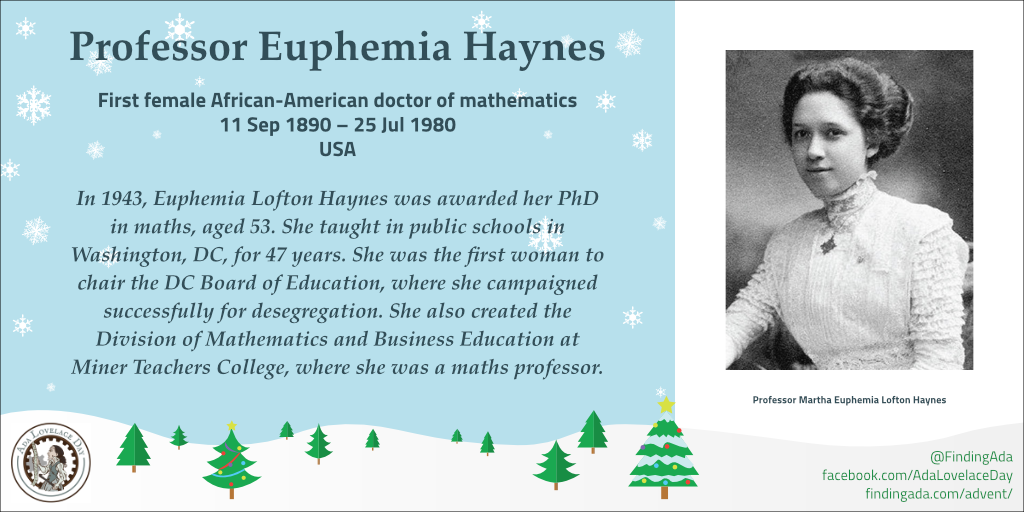This winter, we are celebrating the festive season by honouring 25 amazing women in STEM, some of which you might not know of!
Dr Rupa Bai Furdoonji
First female anaesthetist
before 1885 – after 1920
India
Rupa Bai Furdoonji studied at the Hyderabad Medical School from 1885 to 1889, then worked as a hospital anaesthesiologist, administering chloroform. She was a contributor to the Second Hyderabad Chloroform Commission. In 1909, she studied physics and chemistry at Edinburgh, and later also earnt a doctorate at Johns Hopkins Hospital in Baltimore. She retired in 1920.
Extra info: In that era, anaesthesiology wasn’t a separate discipline as the surgeon would administer the anaesthetic, but physics and chemistry were considered useful subjects for anyone handling anaesthetics. Dr Edward Laurie, the principal of Hyderabad Medical School, encouraged Rupa Bai to become an anaesthesia specialist, and she was likely the first woman to do so.
For more on Dr Rupa Bai Furdoonji:
- https://www.ncbi.nlm.nih.gov/pmc/articles/PMC2933491/
- https://telanganatoday.com/woman-hakeem-showed-way
- https://en.wikipedia.org/wiki/Rupa_Bai_Furdoonji
| Day 12 – Dr Nadezhda Suslova | Day 14 – Al-‘Ijliyah al-Asturlabi |




